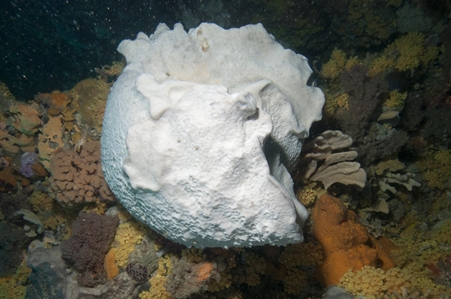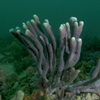General Description
A white, massive sponge species with irregular form. Size of about 20 cm.
Biology
The larger fibres (primary fibres) of the skeleton of this sponge and other species in its genus often fuse together (anastomose) to form bundles called fascicles, making a surface texture like of "old boots".
Habitat
Reef areas, to depth of 30 m.
Sponge gardens
Reefs
Distribution guide
Port Phillip in Victoria.
Species Group
Depth
Water Column
Max Size
20 cm
Diet
Plankton or particles
Commercial Species
No
Global Dispersal
Recorded in Australia
Species Code
sp. MoV 6681
Identify
Conservation Status
- DSE Advisory List : Not listed
- EPBC Act 1999 : Not listed
- IUCN Red List : Not listed





